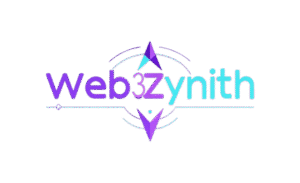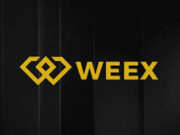Imagine opening your crypto wallet to find a fresh batch of free tokens, just for supporting a project you believe in. That’s exactly what Carbon Browser delivered on August 14, 2025, when it completed a $2,500 CSIX airdrop to eligible stakers holding over 20,000 CSIX tokens. This marks the third time the privacy-focused Web3 browser has shared revenue with its community, reinforcing its commitment to rewarding loyalty. With over 6 million downloads and a growing user base, Carbon Browser is proving that it’s more than just a fast, secure browser—it’s a movement. Let’s dive into the details of this airdrop, what it means for the CSIX ecosystem, and why it’s got crypto enthusiasts buzzing.
The Airdrop Breakdown: Who Got the Goods?
The $2,500 CSIX airdrop, distributed on August 14, 2025, was a thank-you to Carbon Browser’s dedicated stakers. To qualify, wallets needed to hold at least 20,000 CSIX tokens—roughly $71 at the current price of $0.003556 per token. This wasn’t a random giveaway; it was part of Carbon’s third revenue-sharing program, designed to reward users who stake their tokens to support the network’s security and decentralization.
Unlike typical airdrops that might sprinkle tokens across a broad audience, Carbon’s approach was targeted. The focus on high-stake wallets (20,000+ CSIX) ensured that the rewards went to committed supporters, aligning with the project’s ethos of building a loyal, engaged community. While the exact number of recipients wasn’t disclosed, Carbon’s transparency—via tools like BscScan for wallet snapshots—ensured the process was fair and verifiable. This airdrop follows earlier initiatives, like a 5% staking bonus in April 2025 and a $10,000 CSIX pool, showing Carbon’s consistent effort to share profits with its community.<:>,<:>
Why Carbon Browser Stands Out
For those new to Carbon Browser, here’s the quick rundown: it’s a Web3 browser built on a Chromium fork, blending Google Chrome’s speed with hardcore privacy features. Think 3x faster page loading, 95% less data consumption, and built-in ad-blocking and anti-tracking tools. It’s got a multichain wallet, cross-chain swaps, and a “Browse2Earn” model where users earn CSIX tokens just for surfing the web. Launched in 2016 and powered by the BEP-20 CSIX token on Binance Smart Chain, Carbon has racked up over 6 million Android downloads and 50,000 daily active users.<:>,<:>
The $CSIX token is the engine of this ecosystem, with a 1 billion max supply and a deflationary twist: a portion of profits is burned annually (86.5 million tokens by July 2025), potentially boosting value by reducing supply. Stakers also earn yields from revenue redistribution, making CSIX a dual-purpose utility and governance token. This airdrop is a prime example of how Carbon rewards its community while pushing its mission to make Web3 accessible, private, and rewarding.coinmarket
The Power of Revenue-Sharing
Carbon’s third revenue-sharing program isn’t just about free tokens—it’s a bold statement about aligning incentives. By redistributing profits to stakers, Carbon ensures that those who support the network share in its success. The $2,500 airdrop, while modest compared to some mega-airdrops, is a meaningful gesture for a project with a $1.41 million market cap. It’s also strategic: rewarding high-stake holders encourages long-term commitment, which strengthens network stability.
This approach sets Carbon apart from many crypto projects that prioritize hype over substance. The revenue-sharing model, coupled with a “burn” mechanism that will reduce the token supply to 50% over time, creates a sustainable ecosystem where stakers and holders can benefit from the browser’s growth. As Carbon’s CEO put it, “Our goal is to reward those who believe in our vision of a faster, safer, decentralized internet.” With partnerships like ZenChain and integrations with PancakeSwap, Carbon is building a robust Web3 hub that could drive CSIX’s value higher.<:>,coinmarket
How Stakers Got In on the Action
Participating in the airdrop was straightforward but required some prep. Eligible stakers needed to hold at least 20,000 CSIX in a compatible wallet (like MetaMask or Trust Wallet) by the snapshot date, verified via BscScan. The tokens were then airdropped directly to those wallets, with no extra steps needed beyond staking. This simplicity is a hallmark of Carbon’s user-friendly approach, making it easy for both crypto veterans and newcomers to join the party.
For those who missed out, Carbon’s history of airdrops suggests more opportunities are coming. Past campaigns, like the $100,000 CSIX prize pool for Bybit users and a 3% staking bonus in May 2025, show that Carbon keeps the rewards flowing. To get ready for future airdrops, users can stake CSIX via stake.carbon.website or join promotional events advertised on Carbon’s social channels.<:>,<:>
The Bigger Picture: Web3’s Privacy Revolution
This airdrop is more than a one-off event—it’s a piece of Carbon Browser’s broader mission to redefine browsing in the Web3 era. With privacy scandals rocking traditional tech (looking at you, data-hungry browsers), Carbon’s ad-blocking, VPN integration, and decentralized ethos are a breath of fresh air. Its built-in wallet lets users manage crypto and interact with dApps without leaving the browser, while features like LDX.FI (a cross-chain swap/bridge) make it a one-stop shop for Web3 activities.<:>,coinmarket
The CSIX token ties it all together, letting users unlock premium features, vote in the community DAO, and earn rewards through staking or browsing. With 9,720 holders and $2–3 million in daily trading volume just 10 days after its IDO, Carbon’s traction is undeniable. The airdrop reinforces this momentum, incentivizing users to stay active and stake more, which could drive adoption as the browser expands to iOS, Mac, and PC.carbon
Challenges and What’s Next
No crypto project is without risks. CSIX’s price, hovering at $0.003556, is volatile, with a 2.67% uptick in the last 24 hours but a projected -3% dip by 2031. Regulatory hurdles could also complicate things, as Web3 browsers face scrutiny over privacy and crypto integration. Plus, competition is fierce—browsers like Brave offer similar privacy-focused features with established user bases. Carbon’s edge lies in its Web3 integrations and deflationary tokenomics, but it’ll need to keep innovating to stay ahead.<:>
Looking forward, Carbon’s roadmap is packed. The iOS app is in public beta, and plans for deeper blockchain integration (like IPFS and Handshake) could make it a Web3 leader. The team’s commitment to regular token burns—400,000 CSIX burned in May 2025—and more airdrops signals a long-term focus on value creation. If Carbon can maintain its 6 million+ downloads and grow its 50,000 daily users, CSIX could see significant upside.carbon
A Win for the Community
Carbon Browser’s $2,500 CSIX airdrop is a small but mighty step toward building a decentralized, privacy-first internet. By rewarding stakers with 20,000+ CSIX, the project shows it values its community’s trust and participation. As the third revenue-sharing program, it’s a sign that Carbon is committed to sharing its success, whether through airdrops, staking rewards, or token burns.
For crypto fans, this airdrop is a reminder to stay engaged with projects like Carbon. Check stake.carbon.website for staking opportunities, follow @trycarboni on X for updates, and keep your wallet ready for the next giveaway. With its blend of speed, privacy, and Web3 utility, Carbon Browser isn’t just a browser—it’s a gateway to a better internet. Here’s to more airdrops and a future where users control their data and rewards.
Sources:
- Carbon Browser: News – $2,500 CSIX Airdrop Completedcarbon
- Bitget: Carbon Browser Price Today, CSIX to USD Live Pricebitget
- CoinMarketCap: What Is Carbon Browser (CSIX) And How Does It Work?coinmarket
- Carbon Browser: FAQ – Top 5 Questions Answered<:>
- CryptoRank: Reward $CSIX Airdrop by Carbon<:>
- StakingCrypto.io: Carbon Browser (CSIX) Staking at 100%<:>



























